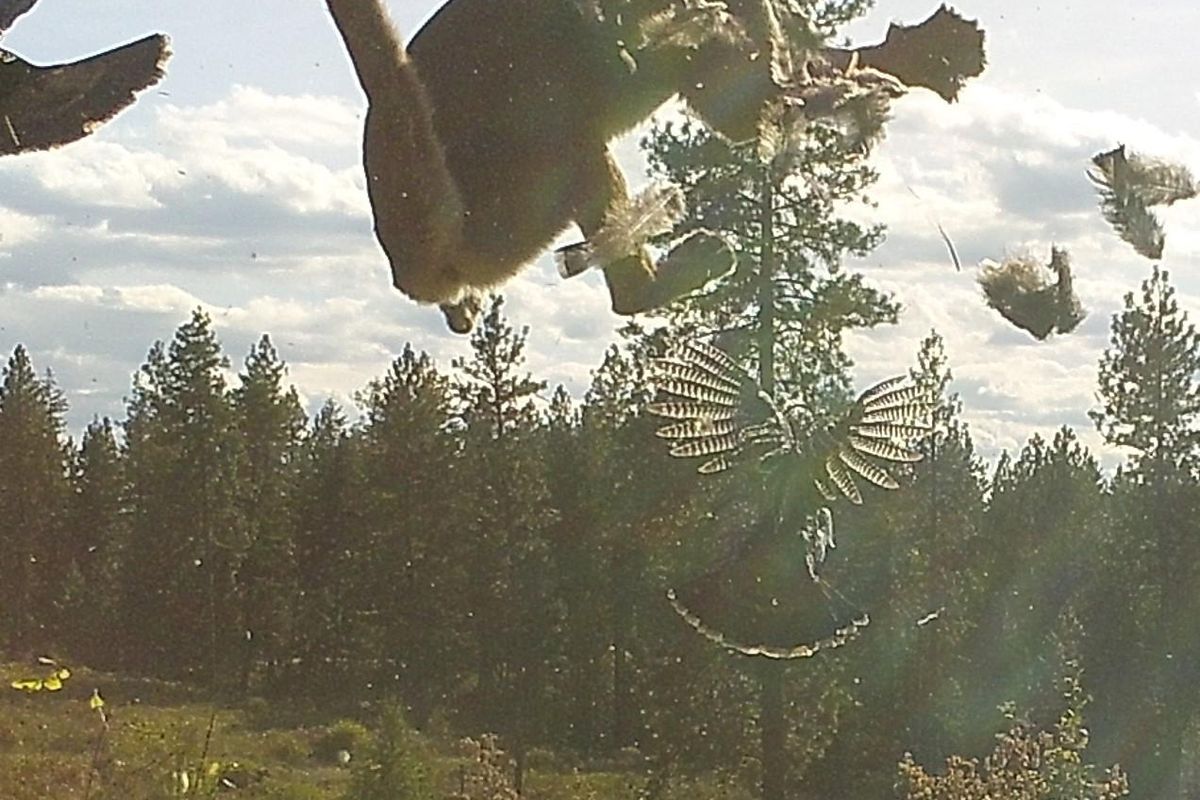Flying feline: Leaping cougar snags a midair turkey dinner

It’s a pose to which any cat owner can relate.
The cougar is midleap, its paws stretched wide, its muscular body scrunched, a puffed-out tail the only linear thing about it.
In the air below the big cat a turkey hovers, some of its feathers already flying through the air.
Mark Gorman captured this remarkable photo last month on Inland Empire Paper land north of Spokane off the Day Mount Spokane Road.
“I’ve never seen anything quite like it,” Gorman said in an email. “I believe the cougar must have launched himself from the tree on which my trail camera was attached as he/she was approximately 8 feet off of the ground when photographed. It looks like the cougar was able to catch a wild turkey as it attempted to fly away.”
Gorman said he’s stood under that tree more than a dozen times this summer and “never once thought to look up.”
“I’ve since made it a point to do so,” he said.
Cougars attacking turkeys is probably pretty common, Kalispel Tribe biologist Bart George said. Cougars are opportunistic feeders, meaning they’ll eat whatever is available.
The big cats are secretive animals that have confounded many efforts to study them. For decades, they were nearly extinct in much of their traditional range. Since the 1990s, their numbers have recovered.
Increased sightings and reports of encounters and conflicts in Washington and Idaho have led many to believe that there are too many of the big cats on the land. Biologists at the Washington Department of Fish and Wildlife and elsewhere say that’s not necessarily the case.
“Well, I’m not so sure there are that many (more) cougars,” said Brian Kerston, a WDFW large carnivore researcher in an interview last year.
Instead, Kerston’s research indicates that the number of reported incidents is not directly connected to the overall cougar population.
This is counterintuitive but, he said what leads to cougar attacks, sightings and incidents has more to do with people and less to do with the animals. For example, increased awareness of cougars (following media reports), increased outdoor recreation and more people living on the urban-rural boundary are all likely playing a roll.
Still, for those living in Northeast Washington, increased sighting are concerning. Those fears were aired at a March public meeting in Spokane. That meeting has prompted the Fish and Wildlife Commission to review its cougar hunting policies a year earlier than scheduled. Those changes will be implemented in 2020.
Statewide cougar density estimates are based off the average of eight separate statewide density studies. That estimate determines hunting limits and seasons.
The commission has asked WDFW staff to examine how that population density estimate is used to set harvest rules and consider using more regional information, including sightings and prey density, when setting hunting seasons and bag limits.